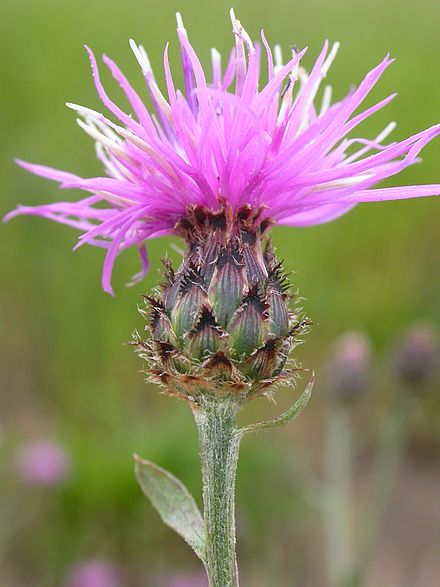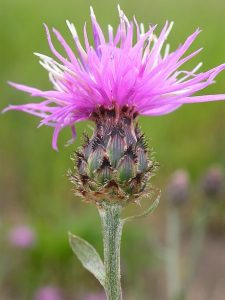
By Blaine Bug Crew

Hey again! The Blaine Bug Crew is back to talk about another interesting weed.
Today we are going to tell you about spotted knapweed. Knapweed loves the sun and heat we have been experiencing. It loves to be wherever you go!
Spotted knapweed is an herbaceous, short-lived perennial reproducing entirely by seed. Producing up to 25,000 seeds per plant, knapweed can remain viable in the soil up to eight years. Flowers range in color from pink to light purple, and bloom from July to October. The bracts of the flower heads are black-tipped, giving the plant its characteristic “spotted” appearance. Seeds are brown to black in color, smooth, and less than 0.25 inch long. Stems are typically 2 to 4 feet tall with lower leaves that are deeply lobed and upper leaves that are more linear. Spotted knapweed prefers moist rangeland habitats, but is common in waste areas, along roadsides, and in pastures. This plant, luckily, has a biological enemy.
Larinus minutus is an abundant biological control agent that can utilize spotted, diffuse and squarrose knapweed. LA overwinters as an adult. Adults emerge in the spring when they begin to feed on knapweed foliage. Females produce between 28 and 30 eggs that they lay in clusters in open flowers. Eggs hatch and larvae feed on seeds and receptacle tissue for about a month. Larvae construct cocoons within the seed heads using pappus hairs, and pupate. Emerging adults chew a characteristic round hole in the top of the cocoon that is visible when viewed from above.
If you see this noxious weed, do your part to keep Blaine County native by calling the Blaine County Weed Department at (208) 788-5574.


